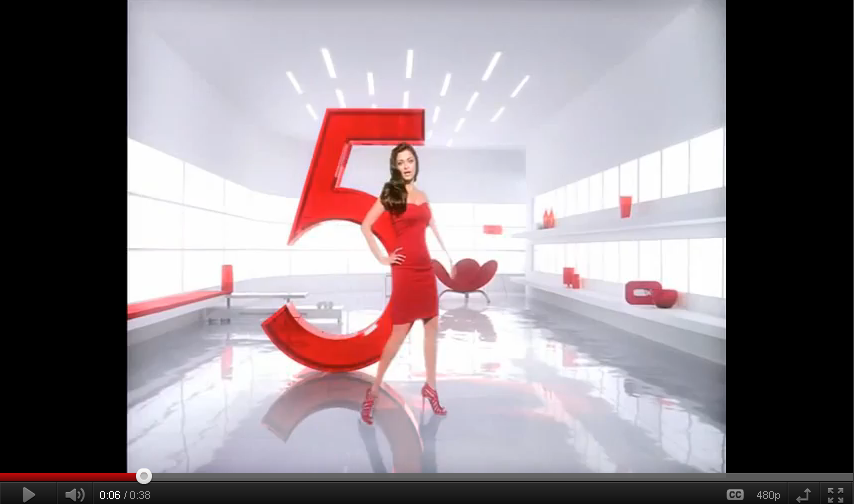Executive Summary
The shampoo segment of hair care market in the UK is rather mature and due to the diversity of products and brands and intense competition in the sphere, it requires using rather sophisticated marketing strategies.
This report will analyze the segmentation, targeting and positioning of the main players in the market, including those of Procter & Gamble, L’Oreal and Alberto Culver in order to understand the branding strategies used by particular companies to reach certain target populations.
The analysis of twenty recent advertisements retrieved from different UK media is used to discuss the application of consumer buyer behavior, communication theory, promotion, branding and distribution strategies in practice.
It is evident from the analysis of the randomly selected advertisements that modern shampoo brands focus on the evaluation of alternatives stage of consumers’ decision making process.
Apart from the printed advertisements of Wash & Go and Pantene Pro-V in Gladys, all advertisements consider the AIDCA formula and capture the consumers’ attention by appealing to consumers’ desires to have beautiful hair and enhance their self-esteem in order to convince them to make certain purchasing decisions.
The affordability of price is mentioned only in the commercial of TREsemme shampoo, whereas the rest of the advertisements completely ignore this aspect. The branding strategies implemented by modern shampoo companies focus on consumers’ desires instead of their basic needs. Also, the push distribution strategy is preferred by modern marketers.
The main conclusion of this paper is that the combination of creative approach, modern marketing principles and alignment with priorities of UK consumers used in most of the discussed advertisements is effective for reaching the marketers’ goals. The main recommendations offered to the shampoo brands are to pay more attention to male consumers and pull distribution strategies.
Introduction
This report is aimed at examining the marketing strategies of shampoo manufacturers and retailers operating in the United Kingdom. This segment of the hair care industry is the most significant one.
In 2008, it generated approximately $587 million, and at this point, shampoo production equals more than 30 percent of this market’s total value (Datamonitor 2010 p. 8). It is probable that in the future this segment will remain as lucrative as it is now. So, financial importance of this segment is one of the reasons why it has been chosen for this paper.
There are several trends which can be observed in this industry. First of all, this market becomes more and more consolidated; currently it is dominated three large companies L’Oreal, Alberto-Culver, and P&G (Datamonitor 2010 p. 15). The market share of these organizations constitutes 69,9 percent (Datamonitor 2010 p. 15).
The companies that operate in this industry attempt to expand their production line and shampoos are only one type of the good that they offer to the customers. The main customers or buyers are supermarkets, drugstores, and pharmacies; hence, their bargaining power is quite strong.
There are some smaller enterprises in this market but they cannot compete with large international retailers in terms of price or scope.
This paper will focus on several aspects:
- STP (the segmentation, targeting, and positioning) strategies adopted by shampoo manufacturers;
- Their promotional and communication approaches;
- The pricing policies;
- The distribution channels.
Furthermore, this report will present a brief overview and evaluation of the advertisements displayed by these companies. Finally, it will assess marketing strategies and suggest possible ways of improving them.
An overview of the chosen adverts
According to Hooley et al., it is almost impossible to succeed without advertising (2008, p. 4). Thus, “marketing specialists are responsible for most of the activities necessary to create the customers the organization wants” (Boone & Kurtz 2007, p. 6).
The twenty advertisements of UK shampoo brands used in this report come from different media, including TV commercials, a wide array of printed sources (newspapers, magazines etc.), Internet banners and street billboards.
Although all of these advertisements are aimed at affecting the consumers’ buying behavior, different approaches are chosen by different brands for communicating the idea that their product is the best choice for the target audience.
According to the creative approaches chosen by different brands, the advertisements can be divided into several categories, namely the advertisements emphasizing the benefits of using a particular product, advertisements focusing on innovative technologies used in products, advertisements depicting the beauty of hair of those who use a shampoo of a particular brand and advertisements appealing to feelings and emotions of potential consumers.
The advertisements of the first category discuss particular benefits of using products of certain brands and offer solutions to certain hair care challenges experienced by consumers. This category includes the printed advertisement of shampoo Clear from the British Vogue (Appendix 1), according to which this product is helpful for getting rid of dandruff and preventing the recurrence of this problem in the future.
The advertisement of Head & Shoulders (In-Style UK), Clear zero (Flawless Magazine) also focus on dandruff problem. On the other hand, Dove Damage Therapy commercial belongs to this category offering solution to the problem of damaging hair under the influence of external factors using captivating humorous approach.
L’Oreal (billboard in London and TV) also belongs to this category but goes even further and promises to solve five common hair care problems.
The second category of advertisements emphasizes the innovative technologies used for achieving better results in haircare. Herbal Essences TV commercial and Pantene Pro-V Volume and Body commercial employ this approach in their adverts.
The choice of the strategy can be explained by the specifics of the medium they come from. The format of a TV commercial allows the brand to devote an episode or two to showing the ingredients included into a certain product and emphasize the innovative technologies used by the company to improve the consumers’ outcomes.
The third category of advertisements focusing on the beauty of hair and its salon look as the desired outcome of using a particular product includes the printed advertisements of L’Oreal found in Pop and Nylon, the advertisements of Garnier found in i-D, Pantene found in Gladys, Pantene found in British Vogue, Dove from London billboard and TREsemme TV commercial.
Without specifying the methods or specific problems to be solved, these commercials focus on beautiful lustrous hair as the desired outcomes of using the advertized shampoo. Additionally, in the printed advert of Pantene found in i-D, the brand involves the celebrity Liv Tyler for marketing the beautiful looks of her hair.
The fourth category comprises an advertisement of Dove found on London billboard and VO5 shampoo commercial which are aimed at appealing to the feelings of the target audience. The Dove commercial discusses the importance of winning hearts, whereas the VO5 commercial focuses on the importance of using an individual approach to every consumer instead of focusing on their hair types only.
The advertisements chosen for this project implement different marketing strategies for attracting the consumers’ attention and appealing to different market segments.
They focus on specific features of particular products designed to tackle certain hair care challenges, achieve beautiful hair or even to be treated as a unique individual by those who develop shampoo technologies.
Segmentation, targeting and positioning in the market segment
STP (segmentation, targeting, and position) strategies represent a process consisting of three stages. At first, it is necessary to identity the customers with identical needs or interest.
This method can be applied to the buyers of shampoo. Some of the brands that were showcased in these advertisements attach greater importance to the health benefits of a product, for example, its ability to remove dandruff. Other companies want to emphasize the beauty of hair which can be achieved by using their product.
A more detailed segmentation of the market must be based on geographical, demographic, behavioral, and psychographic criteria (Ferell & Hartline 2010, 177).
The geographic characteristic cannot tell much about the strategies of shampoo manufacturers because their products are consumed in every part of the United Kingdom. However, one should point out that these companies mostly target urban population because it represents a larger part of the market.
The demographic variable includes several characteristics of a consumer, in particular, sex, age, or income level (Parente 2000, p. 41).
On the basis of these characteristics, we can single out several groups of customer’s
- female and male buyers;
- children, adolescents, adults, and aging population;
- people of various income levels.
There are some other variables which are related to demographic criterion, namely, religion, social class, nationality, education, and so forth.
However, they are not strictly correlated with the consumption of shampoo or other hair care products. The advertisements overviewed in this paper suggest that the majority of manufacturers focus on the adult female population of middle or above-average income.
This segment of the market is by far the most lucrative one; hence one can hardly dispute the choice of the companies. Nonetheless, one should not forget about male clients who can also bring extra revenues.
The third criterion is the behavioral segmentation. It must explain the following aspects:
- the benefits that the customer seeks and the reasons why he/she buys a product;
- the frequency of usage;
- readiness to consume the product;
- the loyalty to the brand (Nykiel 2007, p. 18).
Given these variable, we can single out the following groups of customers:
- The benefits expected by the buyer
- People who value health benefits of the product such as hair strength or reduced dandruff. These clients can be both female and male.
- Customers who attach greater importance to the aesthetic value of the product.
- The frequency of usage
- Everyday users;
- Those people who shampoo less then seven times per week;
- Brand loyalty
- The customers who are attached to one particular brand;
- The buyers who try to experiment with different shampoos;
- Those people who have no brand affiliation; these buyers can very sensitive to the price of the product and the preferences can depend on the pricing policies of various companies.
- The readiness to acquire the products
- The buyers who are willing to acquire shampoo provided that they have an opportunity and if there is a new offer on the market.
- Those clients who buy shampoos only when they run short of it.
The manufacturers of shampoo target mostly everyday or at least regular users of their products. They are mostly interested in people who are willing to buy shampoo if there is an opportunity.
These customers do not regard shampoo simply as a necessity; for them it is a beauty product that helps them better express themselves. The advertisements discussed in this paper are intended for these consumers.
Finally, one should speak about the psychographic segmentation. It is based variables such as values, and lifestyles. It is possible to provide the following classification of customers:
- Values
- Traditionalists or those individuals attempting to eliminate every possibility of risk. These customers are more likely to use one brand of shampoo if it fully meets their needs.
- Innovators or those customers trying to explore new opportunities and seeking new experiences. These buyers are willing to try new products and services.
- Esteem seekers or those who place great emphasis on the opinions of other people. Such individuals strive to use luxury brands in order to raise their perceived status.
- Actualizers or those people striving to fulfill their potential through creativity.
The advertisements analyzed above suggest that the manufacturers of shampoos target mostly esteem-seekers because for these people shampoo is a luxury product, rather than a necessity.
There are various ways of segmenting buyers according to their lifestyles. One can apply the sagacity lifestyle model which is based on the lifecycle of a person (Bim 2004, p. 89). According to this model, potential buyers can be divided into the following categories:
- The dependent population. Mostly, children and adolescents belong to this group. Their buying decisions are usually determined by their parent.
- Self-sufficient customers. In this context the term self-sufficiency refers to the financial independence of a person (Bim 2004, p. 89). This group includes either single people or married couples who have no children. These individuals are of greater interest to shampoo manufacturers because they can afford to buy their products.
- Families with children. Although family as a social unit can be a very profitable customer for the manufacturers of shampoos, the majority of advertisements try to appeal to individual clients. In other words, there is practically no manufacture which positions itself as a brand for the entire family.
- Elderly couples whose children no longer live with them. These buyers are of lesser importance to the producers and retailers of shampoo because these people buy such this haircare product less frequently.
The main targets of leading shampoo manufacturers are financially independent female adults. This analysis of the advertisements shows that the segmentation and targeting strategies do not vary immensely among the manufacturers and retailers of shampoos.
These companies are mostly interested in affluent female customers who use this product on an everyday basis. The advertisements that have been chosen for this report are aimed at this particular audience.
Yet, it seems that these companies should pay more attention to the needs of male customers and families because they also have a strong purchasing power. This approach would enable them to increase their market share and generate more sales.
In turn, the positioning of these brands differs significantly. For example, Pantene, Clear, or Head & Shoulders put stress on the beneficial effects of the shampoos, namely hair strength or successful removal of dandruff. This idea is a part of their value proposition, and it is actively communicated to the potential customers. The approach to positioning is clearly manifested in their advertisements.
In contrast, L’Oreal and Alberto Culver focus on the beauty aspect. Judging from some advertisements, many manufacturers attract the customer’s attention to the volume of hair without saying anything about the ingredients used in a shampoo or its price.
So, these organizations strive to identify some distinctive attributes of their products and the value that they create for the customers.
On the whole, this form of positioning is quite understandable because the success in this market can be possible only if the company’s products bring some distinct value to the consumers (Kumar 2009, p. 572). Therefore, one can argue that their STP strategies are quite efficient.
Consumer buyer behavior
With the intensified competition in the sphere of UK hair care industry and particularly its shampoo segment, there has been a noticeable shift in consumers’ priorities.
According to Bainbridge (2007), shampoos are not viewed as simply toiletries anymore and the UK consumers perceive them as beauty products. This shift should be taken into account by marketers for tracking the consumers’ behaviors and its types.
Taking into account the fact that shampoo as a personal product is a low-involving good, it can be assumed that, when making a choice, consumers may skip some stages of the traditional five stages model.
According to Tyagi and Kumar (2004, p. 55), the traditional five stage model of the buying process comprises of recognition of the problem, information search, evaluation of available options, buying decision and postpurchase behavior.
The most common behavior in this industry would involve following steps: recognition of the need to buy a shampoo and a purchase decision. In some cases a consumer may give preference to a certain brand or evaluate alternatives. Another possible scenario is buying a shampoo by impulse without recognizing the actual need for this purchase.
The twenty advertisements discussed in this report are aimed at the stage of evaluation of alternatives. The information conveyed in each of these advertisements directly or indirectly communicates the idea that their brand is superior and should be preferred to the alternatives.
For instance, the Dove advertisement found on the London billboard directly expresses the idea that this shampoo is number one without providing any substantial arguments to support this claim. The text of the commercial of L’Oreal Total Repair 5 contains a phrase directly motivating consumers to change their shampoo because of the advantages it offers.
Though most consumers would skip the stage of information search when selecting a shampoo, they buy shampoos on a regular basis and can be constantly positioned on the stage of comparison of the available alternatives.
Most advertisements focus on particular characteristics affecting consumer behavior. According to Kotler and Armstrong (2010, p. 161), the most influential factors include cultural, social, personal and psychological characteristics of potential consumers. Depending upon the beliefs of marketers, different attributes of their products are emphasized in advertisements.
For example, the printed advertisements of Clear and Head & Shoulders focus on health benefits offered by their shampoos, namely the solution for the dandruff problem. The TV commercial of Dove combines health benefits and the principle of beauty product in their advertisement and promises that by using Dove shampoo, consumers can decrease the damage of their hair caused by different styling techniques and make their hair more beautiful.
Herbal Essences and Pantene Pro-V TV commercials emphasize the innovative technologies and ingredients used in their products which are targeted at the consumers looking for innovation. The consumers looking for the opportunities to enhance their self-esteem can be interested in VO5 and TREsemme shampoos commercials which promise the salon look and treat the consumers as unique individuals.
The aspect of brand concept is emphasized in the printed advertisement of Wash & Go shampoo emphasizing the 21 years of experience in the business. Similarly, Dove, in one of the billboards presents itself as a hearts winning number one shampoo. The L’Oreal TV commercial concludes that consumers should choose this brand because they are worth the high quality it offers.
As it can be seen from the overview of advertisements, the marketers effectively use particular parts of the consumer behavior theory but put emphasis on particular attributes of product to reach the target group of consumers.
The Promotion Mix
The promotion mix usually includes elements such as advertising, direct marketing, exhibitions, sales promotions, personal selling, and so forth (Sandhusen 2008, p. 480). The most common element is multi-media advertising which relies on printed sources of information such as fashion magazines and television. The second component is corporate image.
Every manufacturer of shampoo is willing to maintain the reputation of a quality producer who always strives to protect the best interests of a customer. These two elements of promotional mix are the most important for companies under consideration.
Yet, one should not forget about public relations component since it is closely tied with advertising and corporate image. The manufacturers of shampoos interact with many stakeholders who can affect their performance, for example, the governmental agencies that monitor the quality of their products, fashion editors, and customers.
Continuous interaction with these stakeholders enables them to increase public awareness about the company or its products and prove this organization is a responsible corporate citizen.
The main objective of their promotion strategy is to convince the consumers that a certain product can create value for him/her. Overall, these companies are able to attain these objectives. the brands mentioned in this report, are well known in the United Kingdom or other European countries.
These organizations choose such media as television, billboards, or magazines for several reasons. First they enable them to present the information about the product to a larger group of potential buyers. Secondly, such media help them showcase the key qualities of the product and differentiate it among others.
Their choice of promotion channels seems to be quite rational and effective. Along with Internet, television and printed sources are surely popular media nowadays, especially if we are speaking about the target audience that these companies want to reach.
The communication strategies
Marketing communication is based upon sharing certain information with the potential consumers, ensuring their understanding of the encoded messages and invoking certain responses in them affecting their buying behavior. In that regard, the advertisements under analysis effectively use communication theories though there is some potential for miscommunication in a few of them.
To communicate certain messages to the audience, marketers select particular symbols to encode the message that the shampoo of their brand is the best choice of all available alternatives (Varey, 2002, p. 117).
Blythe (2006, p. 2) stated that to encode and decode the advertizing messages successfully, the involved participants of marketing communication should share common views of the involved symbols.
However, the printed advertisement of Wash & Go found in Vogue, which presents the image of the product and mentions the 21 years since the brand was established, can be misinterpreted by consumers.
The marketers used the image of the bottle of shampoo as a symbol of the brand concept which was expected to be associated with experience of the company and, consequently, reliability of the product. However, Vogue readers expect something new and the information on the 21 years of using the same technologies would not impress them.
Additionally, because of their prior experiences, consumers can have their personal opinions of the quality of this product as compared with other brands (Smith & Taylor, 2004, p. 107).
Another advertisement containing potential for misunderstanding is the printed advertisement of Pantene found in i-D magazine depicting Liv Tyler with her beautiful hair. The advertisement lacks additional details on the means through which the celebrity made her hair so beautiful and the meaning of this printed advertisement and can be easily misinterpreted.
Even though the AIDCA formula, the acronym standing for attention, interest, desire, conviction and action are criticized by modern theorists, these principles should be considered by marketers (Hammond, 2011, p. 16).
According to Hammond (2011, p. 16), the AIDCA formula is limited because it understates the impact of various psychological factors upon the consumers’ decision making process. In other words, the attention and interest of consumers do not necessarily result in their actions and purchase decisions.
On the other hand, to reach the target audience, an advertisement must draw attention of consumers. However, these principles are neglected in Wash & Go printed advertisement; the image of a product on the black background is insufficient to capture consumers’ attention and generate their interest.
Therefore, it can be thought to be ineffective for influencing the purchase decisions as the arguments are not convincing. The same goes for the printed advertisement of Pantene found in Gladys depicting a girl with her healthy beautiful hair in a knot.
This commercial looks rather bleak and lacks particular emphasis. A decision to include an arrow with the word ‘look’ into this printed advertisement can be explained with the specifics of the chosen channel of communication because visual effects are the main ways for putting an emphasis upon certain parts of a magazine advertisement.
However, the arrow can remain unnoticed and result in misunderstanding. Conversely, the printed advertisements of L’Oreal and Alberto Culver depict girls with emphasis on their gorgeous hair, which attract the consumers’ attention and make the interpretation easy.
Pricing Policies
The advertisements under review contain practically no information about the prices of the products. Only one of the video commercials suggests that their shampoo is affordable to a large audience. However, price criterion is not the main focus and it is not used to differentiate the product.
The absence of price information can be explained by the fact that these firms target mostly affluent members of the society. These people are more concerned about the quality of the product rather than its cost. From this point of view, companies’ policies are quite justified.
However, one should not forget that in times of economic recession many customers can become more concerned about the price. This information can be very relevant to them. Perhaps this is the time the hair care industry should reevaluate their advertisements. It seems that they could be more informative.
The pricing strategy of the companies operating in this sector has several distinct components. First, they use value optimized pricing. According to this approach, the price of the product is not based production or labor costs; more likely it reflects the perceived value of the product for the customer (Kotler & Armstrong 2010, p. 315).
The company will charge as much as a customer is prepared to pay. To some extent, this pricing approach is used by P&G, L’Oreal, Alberto Culver, and others. The revenues generated relying on such pricing policy usually surpass the net cost of production and marketing, which s the main benefit of this approach, hence it is widely adopted in the hair care industry.
However, shampoo manufacturers and marketers also pay attention to the prices charged by the competition. Therefore, the pricing strategies in the industry are based on two distinct variables; the perceived value of a product and competition.
One should bear in mind that historically this market was driven more by value creation and innovation but not price leadership. This trend can still be observed in this industry.
Core, tangible and augmented product
Due to the maturity of the shampoo segment of the hair care market in UK, the branding strategies are significant for all competing companies. Taking into account the fact that there is a surplus of products, it can be stated that branding strategies used by particular brands can have a significant impact upon their outcomes and the industry.
As it has been mentioned previously, shampoo is not perceived as a merely a hair care item but is regarded as a beauty product by the vast majority of UK consumers. According to Franzen and Moriarty (2009, p. 23), brand strategies tend to be focused on desires of consumers rather than their basic needs.
Therefore, the basic needs of hair care are taken for granted and not mentioned in modern advertisements. Instead, marketers focus on heath and beauty benefits offered by their products. Additionally, a special emphasis is put upon the self-esteem.
This is why, the commercials of L’Oreal and VO5 state that consumers should select their brand because they are worth of high quality they offer. Therefore, the concept of brand is included into printed and video advertisements.
The core product offered by modern marketers is composed of tangible and intangible features. All shampoos mentioned in the advertisements in this analysis are formal products because of their specific packaging and additional features which are used for making the products recognizable. According to Jain (2009, p. 163), modern consumers perceive products as a bundle of benefits complying with their individual needs.
The TV commercial of VO5 shampoo clearly demonstrates an exaggerated application of this strategy in practice. The advertisement claims that the innovative technology used in the product satisfies individual needs of all consumers, regardless of their hair type.
The promise to treat different hair types differently and comply with any needs of consumers sounds almost unrealistic but offers exactly what consumers want. According to Saxena (2009, p. 227), marketers can enhance the value of products by expanding the service component.
For this reason, all advertisements claim that shampoos of their brands offer not only hair care, but also additional benefits of solving medical challenges and making hair more beautiful and even salon looking. This added value is referred to as augmented product and is offered by majority of brands.
The augmented product in the TV commercial of VO5 shampoo, can be the promise of beauty and health of all hair types and the enhanced self-esteem due to that. Additionally, by mentioning the innovative technologies used in this shampoo, the commercial can attract attention of the consumers looking for innovation.
Thus, the commercial of VO5 shampoo is based on consideration of desires of modern consumers and effectively implements the principle of expanding the service component for enhancing the product value.
Distribution Strategies
In the United Kingdom, the main distribution channels are hypermarkets and supermarkets, which account for more 50 percent of all sales (Datamonitor 2010, p. 31). Drugstores and pharmacies are the second largest distributors while the third place is occupied by specialist retailers that market only hair care accessories (Datamonitor 2010, p. 31).
Thus, there is no direct contact between the manufacturers and ultimate users of the products. The companies operating in this industry do not want to rely on direct marketing because this strategy is costly. Overall, their approach to distribution is quite prudent.
Nonetheless, one should take into account that due to overreliance on supermarkets and hypermarkets as primary distribution channels, their bargaining power increases (Datamonitor 2010, p. 31). At the moment, the situation has not reached a critical moment, but in the future the hypermarkets may begin to dictate their terms to the manufacturers. This is the danger that they should be aware of.
The advertisements examined in this report tell very little about the places where a potential buyer can purchase shampoos. It is assumed that the consumers know this information. Their approach can be called a push strategy which means the buyer is not able to communicate directly with the manufacturer (Lamb, Hair, & Daniel, 2011, p. 111).
These advertisements present no contact information of the companies, and this is a significant limitation. In many cases, buyers may want to know more about the ingredients of the shampoo and their qualities. This is why the manufacturers should pay more attention to the communication with the customers. This change can make their products more attractive to the clients.
Critique and recommendations for the adverts and brands
As it can be seen from the analysis of the chosen advertisements, the branding strategies used by shampoo companies reflect the views of marketers on the segmentation, targeting and positioning of their products and effectively apply the communication theories and branding strategies.
The main strength of the advertisements under analysis is their compliance with the main requirements of modern consumers and focus on their desires instead of basic needs. Additionally, the creative approaches used in some of the commercials make them entertaining and produce a positive impression upon the audience.
For instance, the TV commercial of Dove Damage Therapy offers a funny song with a few episodes depicting young girls damaging their hair. This song amused the audience and had a positive impact upon branding of the product.
A fresh idea with dummies on the production line which was used in the commercial of the VO5 made this brand to stand out from the crowd and produced a long-lasting impression upon the spectators. Thus, by combining creative ideas and consideration of the current trends in the market segment, marketers can add value to products and improve their branding.
Among the weaknesses of the discussed commercials, there is the lack of attention to the male consumers and prioritizing the push distribution strategy used by vast majority of the shampoo brands.
Even though women tend to pay more attention to self care products than men, the shampoo brands could pay more attention to potential male consumers who would not be interested in damage therapies offered by modern advertisements.
Concentrating their efforts on female audience and neglecting the interests of men in their marketing strategies, the marketers understate the extra revenues which could be brought by male clients. Another recommendation for all the brands is to pay more attention to pull strategies and communication between consumers and producers of shampoos.
Even though consumers may frequently skip the stage of information search in their purchase decision making process, they may have certain questions concerning the products and printed advertisements and commercials can be insufficient for answering them.
References
Bainbridge, J., 2007. Sector insight: Shampoos and conditioners – Niche appeal brings opportunity. Business Source Complete Web. Web.
Bim, R., 2004. The effective use of market research: How to drive and focus better business decisions. New Jersey: Kogan Page Publishers.
Blythe, J., 2006. Essentials of marketing communications. Edinburgh Gate: Pearson Education.
Boone, L.E., & Kurtz, D., 2007. Contemporary marketing. 13th ed. Boston: South-Western College Pub.
Datamonitor, 2010. Haircare industry profile: United Kingdom. Datamonitor Research Web.
Ferell, O., & Hartline, M., 2010. Marketing strategy. New York: Cengage Learning.
Franzen, G., & Moriarty, S., 2009. The science and art of branding. New York: M.E. Sharpe.
Hammond, J., 2011. Branding your business: Promoting your business, attracting customers and building your brand through the power of emotion. Philadelphia: Kogan Page Limited.
Hooley G., Saunders J., Piercy N., & Nicolaud, B., 2008. Marketing strategy and competitive positioning. 4th ed. New Jersey: Prentice Hall.
Jain, A., 2009. Principles of marketing. New Dehli: J.N. Printers.
Kotler, P., & Armstrong, G., 2010. Principles of marketing. Upper Saddle River: Pearson Education.
Kumar, S. R., 2009. Consumer behavior and branding: Concepts, readings and cases-the Indian context. New York: Pearson.
Lamb C. W., Hair, J., & McDaniel, C., 2008. Essentials of marketing. 6th ed. Boston: South-Western College Pub.
Nykiel, R., 2007. Handbook of marketing research methodologies for hospitality and tourism. London: Routledge.
Parente, D., 2000. Advertising campaign strategy: a guide to marketing Communications Plans. New York: The Dryden Press.
Sandhusen. R., 2008. Marketing. London: Barron’s Educational Series.
Saxena, R., 2009. Marketing management. New Dehli: McGraw Hill Education.
Smith, P., & Taylor, J., 2004. Marketing communications: An integrated approach. Sterling: Kogan Page Limited.
Tyagi, C.L., & Kumar, A., 2004. Consumer behavior. Delhi: Mehra Offset Press.
Varey, R., 2002. Marketing communication: Principles and practice. New York: Routledge.
Appendices
Clear
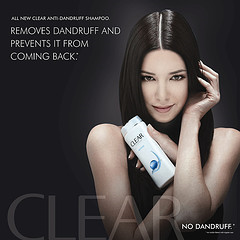
(British Vogue, 1st November) – magazine.
L’Oreal
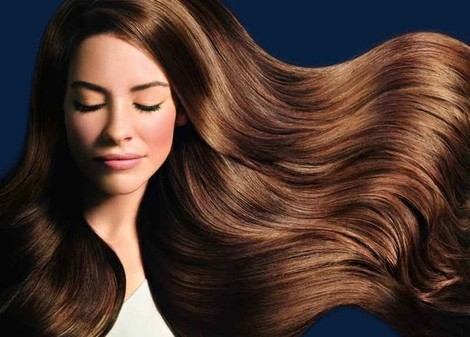
(Pop, 1st November) – magazine.
L’Oreal

(Nylon, 3rd November) – magazine.
Alberto Culver
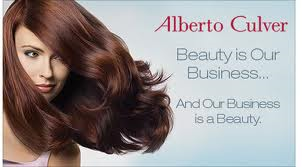
(Nylon, 3rd November) – magazine.
Pantene

(i-D, 4th November 2011) – magazine.
Head & Shoulders
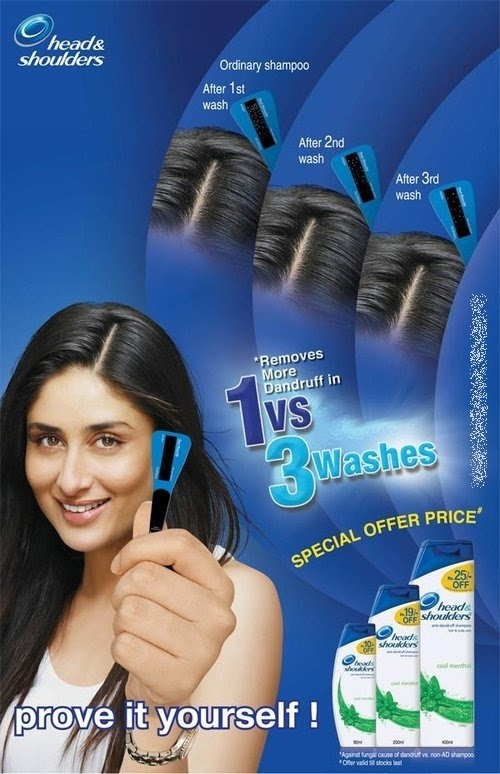
(In-Style UK, 4th November 2011) – magazine.
Head & Shoulders
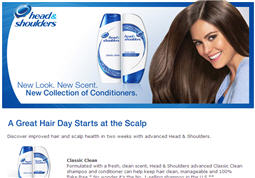
(London, 5th November, 2011).
Garnier
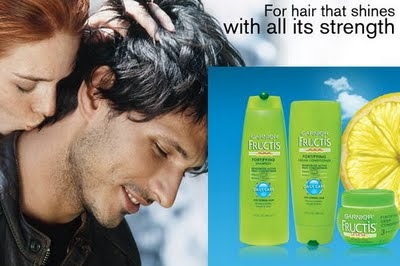
(i-D, 4th November 2011) – magazine.
Clear
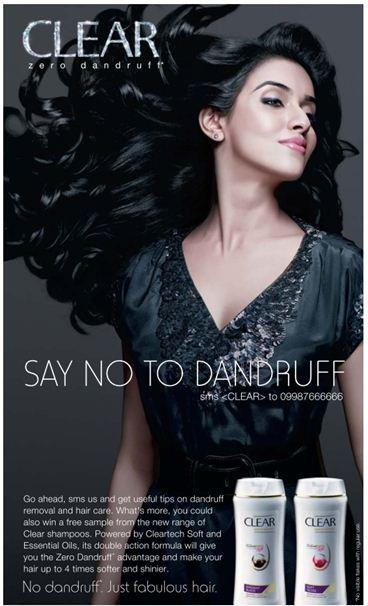
(Flawless Magazine, 6th November, 2011).
Wash & Go
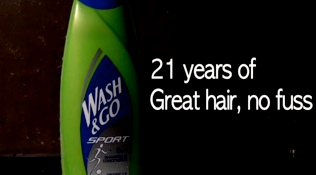
(British Vogue, 6th November, 2011) – magazine.
Pantene
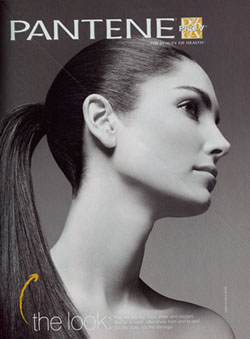
(Gladys, 7th November, 2011) – magazine.
Pantene
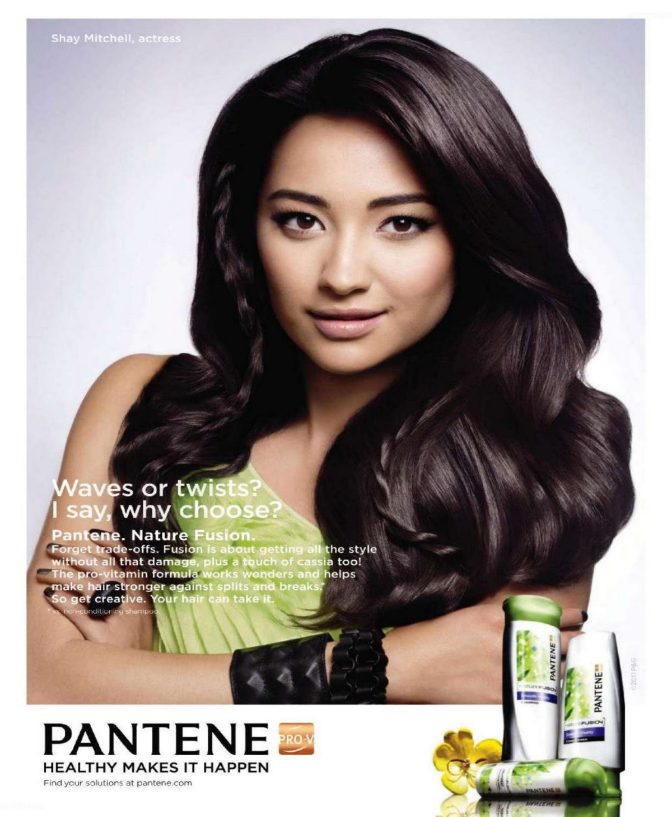
(British Vogue 7th November, 2011) – magazine.
Dove
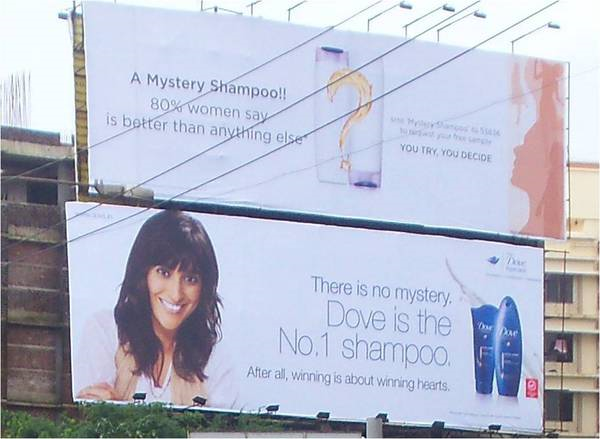
(London, 5th November, 2011).
L’Oreal
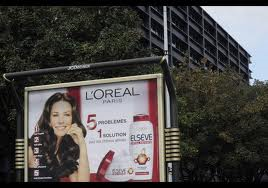
(London, 5th November, 2011).
Herbal Essences
TV advertisement emphasizes the water activated ingredients, depicting a woman who uses the shampoo somewhere in a rainforest which can be associated with paradise by the audience.
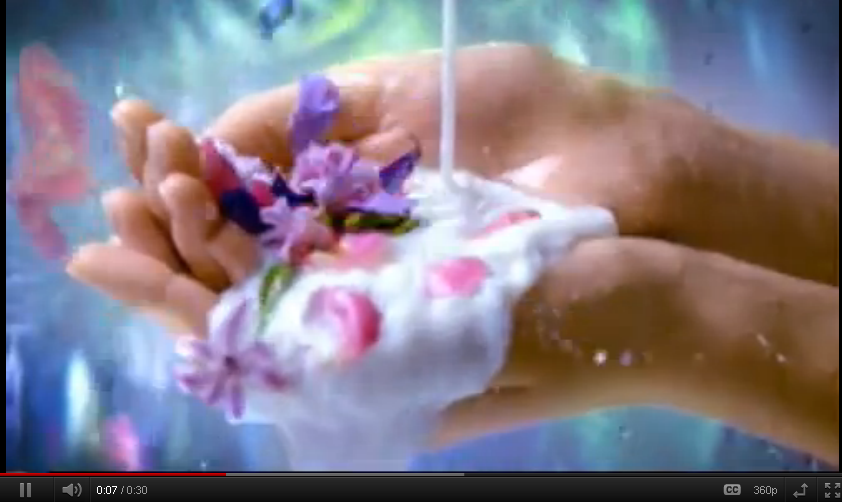
Pantene Pro-V
Volume and Body Commercial depicts the ingredients of shampoo and healthy volume hair of the actress, concluding that this product can be used for creating 60% more volume and reducing the hair damage by 60%.

VO5 Shampoo commercial
You are more than a hairtype/ You are an Individual. Depicts identical dummies on a production line, concluding that every person is more than a hairtype and should be treated accordingly. The advertisement claims that the technologies used in VO5 comply with consumers’ individual needs.

TREsemme
TV commercial depicts a girl coming to a hairstyle salon with a voice of a hairdresser concluding that TREsemme allows his clients to achieve the same results at home. The affordable price of the product is emphasized in this ad.

Dove Damage Therapy
TV commercial represents a funny song and video showing the ways in which modern girls can damage their hair. In the final episode the Dove shampoo is presented as solution taking care of the damage.

L’Oreal Total Repair 5
Good Reason commercial enumerates 5 reasons for changing the shampoo and selecting the L’Oreal product with a traditional conclusion used by L’Oreal in all advertisements, admitting that the consumers are worth it.
